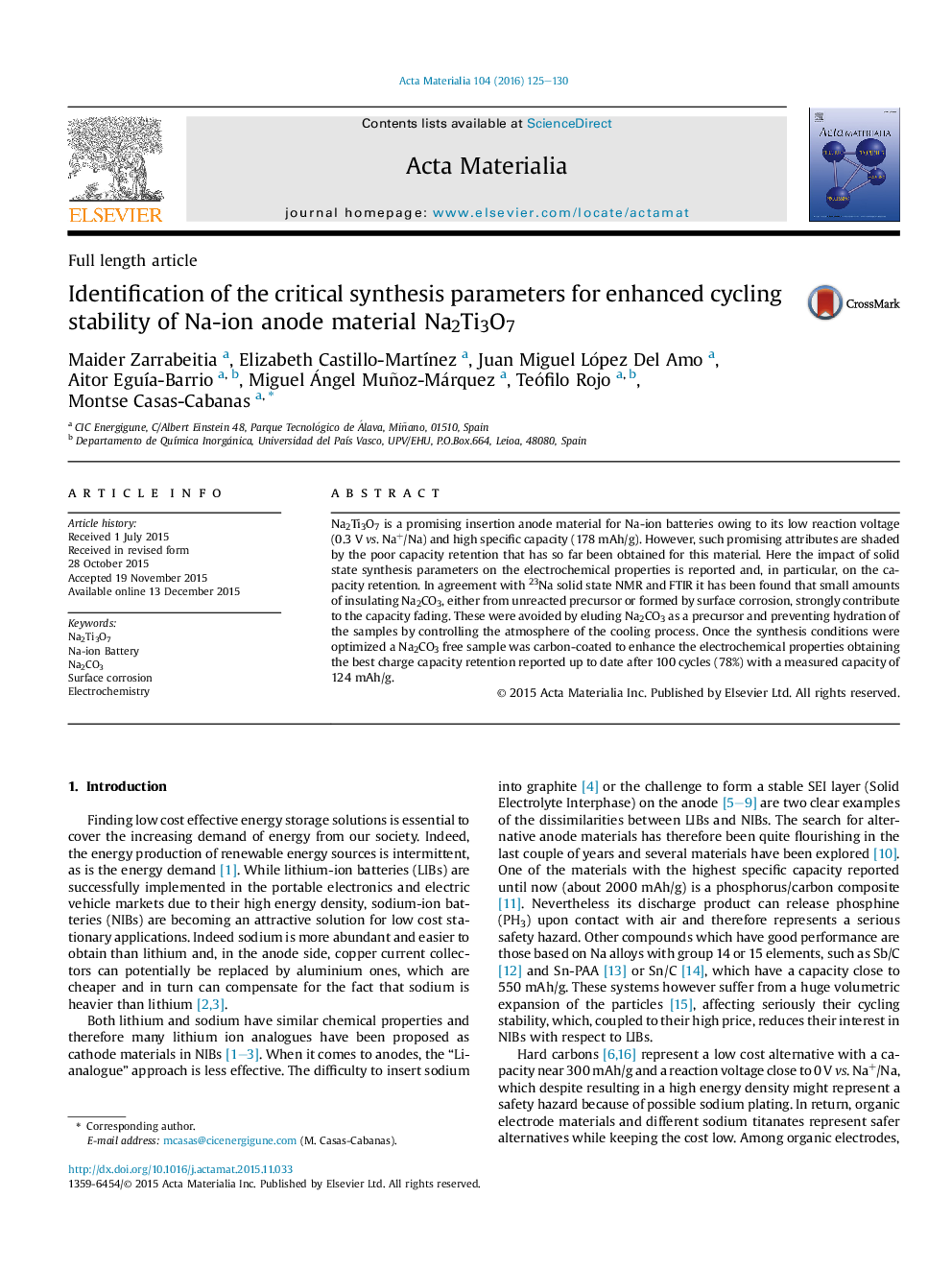| Article ID | Journal | Published Year | Pages | File Type |
|---|---|---|---|---|
| 1445153 | Acta Materialia | 2016 | 6 Pages |
Na2Ti3O7 is a promising insertion anode material for Na-ion batteries owing to its low reaction voltage (0.3 V vs. Na+/Na) and high specific capacity (178 mAh/g). However, such promising attributes are shaded by the poor capacity retention that has so far been obtained for this material. Here the impact of solid state synthesis parameters on the electrochemical properties is reported and, in particular, on the capacity retention. In agreement with 23Na solid state NMR and FTIR it has been found that small amounts of insulating Na2CO3, either from unreacted precursor or formed by surface corrosion, strongly contribute to the capacity fading. These were avoided by eluding Na2CO3 as a precursor and preventing hydration of the samples by controlling the atmosphere of the cooling process. Once the synthesis conditions were optimized a Na2CO3 free sample was carbon-coated to enhance the electrochemical properties obtaining the best charge capacity retention reported up to date after 100 cycles (78%) with a measured capacity of 124 mAh/g.
Graphical abstractThe origin of capacity fading in Na2Ti3O7 Na-ion negative electrode is shown to be related to surface corrosion reactions and was strongly reduced through control of the synthesis conditions.Figure optionsDownload full-size imageDownload high-quality image (151 K)Download as PowerPoint slide
